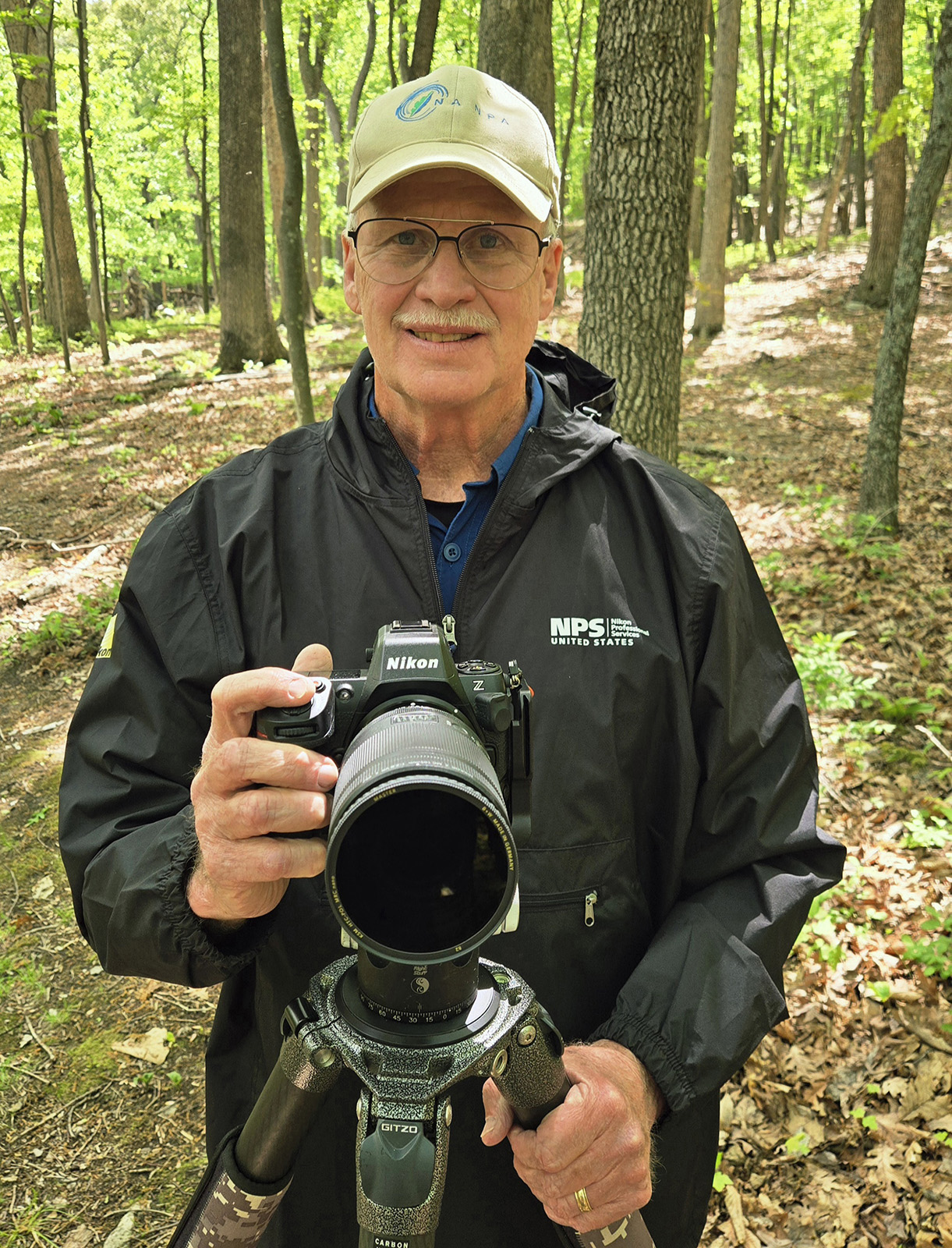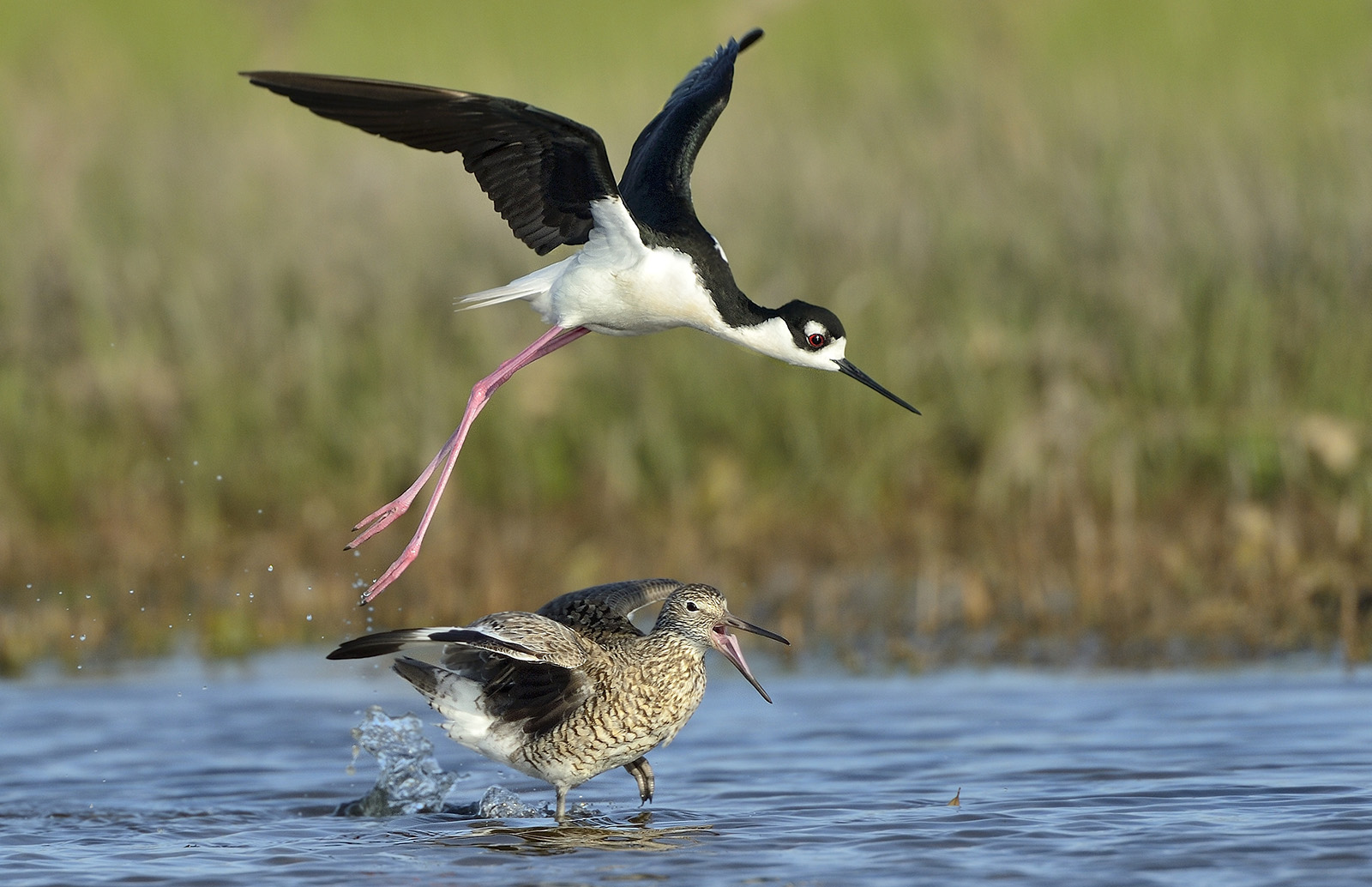
A Lifetime of Evocative Images: A Chat with Nature Photographer Jim Clark
By Andrea Naccarato/DWR
The North American Nature Photography Association (NANPA) is celebrating the 20th anniversary of Nature Photography Day on June 15. Nature Photography Day is intended to “promote the enjoyment of nature photography, and to explain how images are used to advance the cause of conservation and protect plants, wildlife, and landscapes both locally and globally,” according to NANPA’s website.
On this 20th Nature Photography Day, NANPA will be recognizing Virginia photographer Jim Clark with a Lifetime Achievement Award. Clark, who served as the President of NANPA from 2002-03, also has had photos published in Virginia Wildlife magazine for decades and wrote Photo Tips columns for the magazine in 2018 and ’19. He also spent 30 years working as a wildlife biologist, mostly with the U.S. Fish and Wildlife Service.In addition to creating beautiful images himself, Clark spends a lot of time conducting seminars and workshops to help other photographers hone their skills. We chatted with Clark about his career and NANPA’s Lifetime Achievement Award.
Virginia Wildlife: What does receiving NANPA’s 2025 Lifetime Achievement Award mean to you?
Clark: This is the highest honor that NANPA bestows to individuals within the field of photography. This came as a complete surprise to me.
Being acknowledged by your colleagues and joining past notable recipients like Joel Sartore, Frans Lanting, John Shaw, and Wendy Shattil is truly meaningful. I am honored to be listed among these giants in nature photography. It also means I have been around a long time! And wow, where did the time go?
Using nature photography to share with and inspire others has always been my goal. The award signifies that my work has contributed to both the field of nature photography and to one of NANPA’s missions: promoting and protecting our natural heritage.
NANPA significantly influenced my nature photography career. I started pursuing nature photography as both a hobby and a profession in 1976. My nature photography business gradually grew, but it rapidly expanded after I joined NANPA at its inception in 1994. I am proud to say I am charter member number 0005.
What drives your passion for nature photography?
My passion for nature initiated my journey into nature photography. Growing up in the coal fields of southern West Virginia, the surrounding mountains served as my playground.
At the age of 10, I developed a keen interest in birds, and I soon became proficient in identifying them by both sight and sound. This initial interest expanded into an appreciation for all aspects of nature, fostering an insatiable desire to learn about the natural world. This quest for knowledge has remained with me for 61 years.

Jim Clark in action in the field with camera in hand. Photo by Mark Ferland
What motivates you to teach nature photography skills to others?
To use my nature photography to teach and motivate others is what drives my love for the medium. Inspiring others to photograph and experience nature has been the highlight of my career. My guiding principle is to be a naturalist first and a photographer second. Learning about nature enhances our skills and respect for the environment. The joy in teaching nature photography comes from seeing students thrilled by both their images and their experiences in nature.
What are some reasons you love photographing wildlife in Virginia?
The ecological diversity of Virginia, ranging from the mountains to the sea, offers a vast spectrum of opportunities and subjects for photography. Virginia has been home for the past 32 years, and I have explored every corner of the state, finding each region—from the Blue Ridge Mountains to the Piedmont to the renowned Eastern Shore—abounding with countless photographic prospects.

Black-necked stilt and willet photographed in Chincoteague, Virginia. Photo by Jim Clark
Is there a specific memory of photographing a Virginia wildlife species that was especially meaningful that you would like to share?
I have so many wonderful memories of photographing wildlife in Virginia, it would be impossible to list one as my favorite. But one memorable moment occurred while photographing at Chincoteague National Wildlife Refuge.
While exploring a saltmarsh at the refuge, I heard the clattering call of a clapper rail. I set up my camera and waited patiently in hopes it would eventually appear. Much to my surprise, the rail walked out along the edge of the marsh and put on a great show for me. After spending an hour or more watching and photographing the rail, I left.
A week later, I returned to the same spot and within a minute or so, the clapper rail emerged from the marsh and was accompanied by four black chicks. I am convinced she was showing off her chicks to me. That was a memorable highlight for sure.
Is there anything else you would like to share with our readers?
Capture images that make viewers feel present in the scene—sensing winter’s cold touch on a snow-covered meadow, embracing the refreshing spray from a mountain cascade, or soaking in the sweet fragrance of an autumn forest. If your images evoke these feelings, you have succeeded. This is the essence of nature photography.
Distribution channels:
Legal Disclaimer:
EIN Presswire provides this news content "as is" without warranty of any kind. We do not accept any responsibility or liability for the accuracy, content, images, videos, licenses, completeness, legality, or reliability of the information contained in this article. If you have any complaints or copyright issues related to this article, kindly contact the author above.
Submit your press release